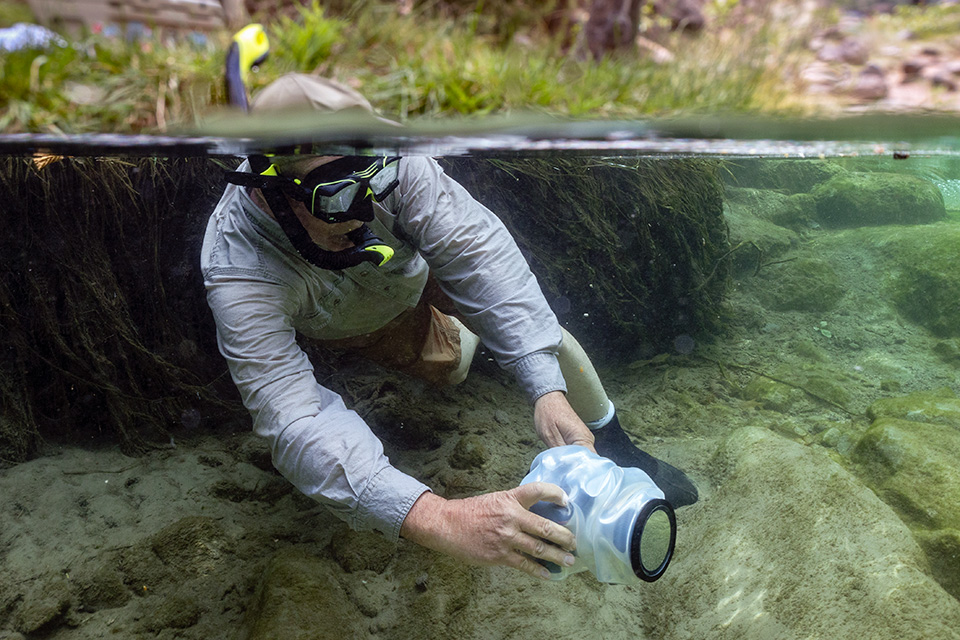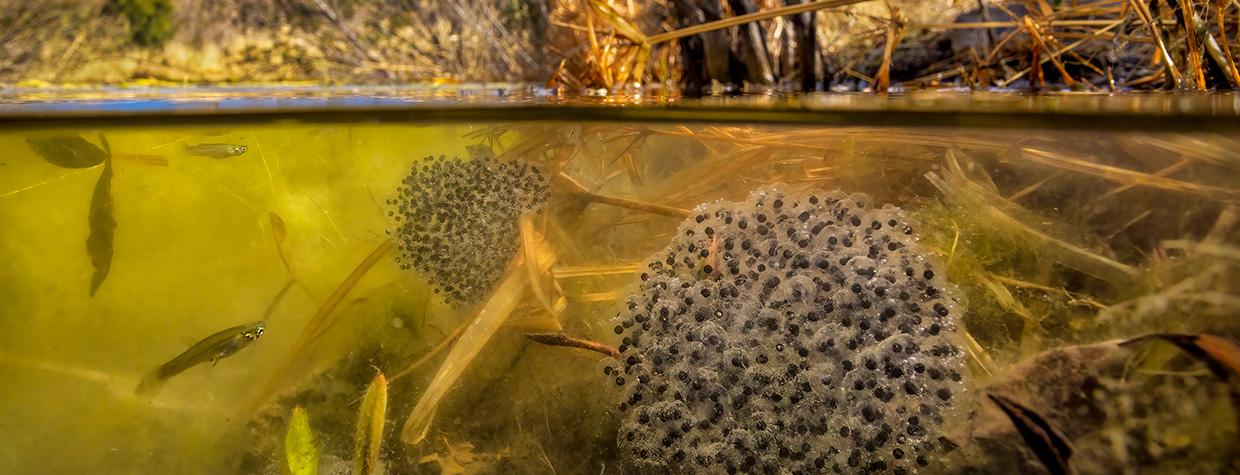JK: How did you get into working with Arizona’s wildlife, the main focus of your photography?
BDT: I have a Ph.D. in aquatic biology, and after I earned my degree, I worked as a research scientist in aquatic ecosystems at the Illinois Museum of Natural History. I then got a job as the chief of fisheries at the Arizona Game and Fish Department, where I was dealing with basically all the aquatic life in the state. Later, I became the department’s assistant director for wildlife management, which took me in all kinds of directions in terms of Arizona wildlife.
JK: Over the past few years, you’ve been doing some underwater photography. What took you in that direction?
BDT: It appeals to me as a nature lover and a scientist. I also have a friend who has private property in Southeastern Arizona, and there are a lot of endangered and other species in the ponds on his land. On the internet, I found a person who does a beautiful job of photographing ephemeral ponds, and I developed a hankering for making my own photographs. But I had no idea how to do it or what equipment I’d need.

JK: What did you learn?
BDT: The first thing a wildlife photographer needs is the biological background to find what they want to photograph. I already had that, but I was lacking the technical aspect. I found out that most underwater gear, such as a waterproof housing for the camera and a port for the lens, is very expensive, so I started looking for an entry point that wouldn’t break the bank. I found a company called Outex, which makes thick, stretchable silicone bags that keep the camera dry while allowing you to use it underwater. They’re very versatile and much more affordable than the higher-end housings. I’ve since moved up to some of those products, but I still use the Outex bags for a lot of this work.
JK: What are some of the challenges to making photographs underwater?
BDT: Jumping from terrestrial to underwater photography isn’t like going from birds to mammals — it’s a different learning curve. The optics are different, it can be difficult to focus underwater, and the water absorbs some of the colors and leaves you with photos that are very blue and green. Water also acts as a magnifier, so you have to account for that. Overall, though, it’s about getting out there and doing it so you can learn.
JK: Tell me about this photo.
BDT: This is at the property that I mentioned. In this pond are Yaqui topminnows and Chiricahua leopard frogs, both of which are threatened species. You can see the topminnows on the left side of this image, but my focus here was the egg masses, in which you can see the frogs’ embryos beginning to grow. I wanted to show this scene underwater and above water, both to give context and to make it more visually appealing. My goal is to show the whole life history of these frogs in a visually stimulating way.
Do you have a question about photography? Email it to [email protected], and our photo editor, Jeff Kida, will try to answer it in a future issue.

